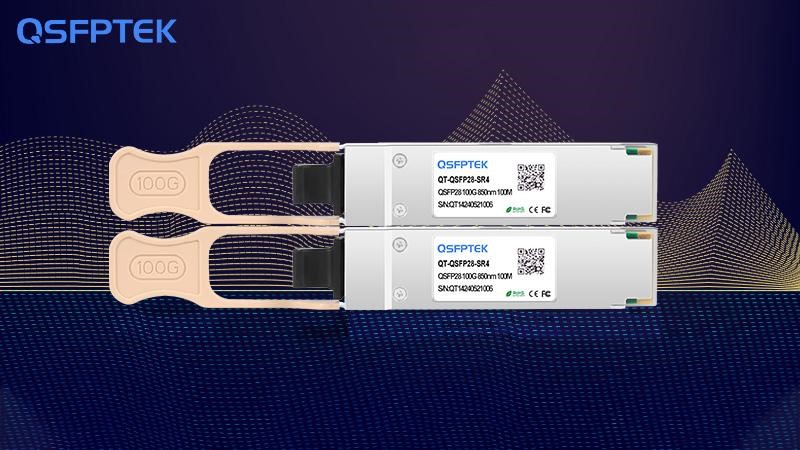In the age of high-definition (HD) video streaming, digital surveillance, and multimedia applications, the demand for high-speed, reliable data transmission has never been more critical. As video surveillance systems evolve to provide higher resolution and real-time analysis, the need for faster, more efficient network solutions becomes increasingly important. This is where 10G modules come into play. These high-performance modules are key enablers for systems that require substantial bandwidth, such as video surveillance, live video streaming, and other multimedia applications. In this article, we explore how 10G modules support these demanding use cases and significantly improve system performance.
High-Bandwidth Support for Video Surveillance Systems
One of the most prominent applications of 10G modules is in video surveillance systems. As security cameras transition from standard definition to HD and 4K video, the amount of data generated by each camera increases significantly. For instance, a single 4K camera can produce up to 12-15 Gbps of data, far exceeding the bandwidth capabilities of older networking equipment. Traditional Gigabit Ethernet connections simply can’t handle such high data rates, resulting in slow data transmission, lower frame rates, and reduced video quality.
This is where 10G Ethernet modules shine. By offering 10 Gbps of throughput, 10G modules provide the necessary bandwidth to support multiple high-definition video streams over the network simultaneously. Whether it’s for a single high-definition camera or an entire network of 4K cameras, 10G modules can ensure that video data is transmitted without significant delays, maintaining high-quality resolution and real-time performance. This high throughput is essential for real-time monitoring, enabling security teams to view video footage with minimal lag, which is critical for security operations.
Enhancing Data Transfer Speed and Efficiency
Another area where 10G transceivers excel is in data transfer speed and efficiency. In traditional surveillance systems, video feeds are often stored on local storage devices, then transferred to a central video management system (VMS). This process can be slow and inefficient, especially when dealing with large amounts of data. As the volume of video data increases, it becomes increasingly difficult to maintain low latency and fast access times with older technologies.
With 10G modules, video data can be transferred between cameras, servers, and storage systems with greater efficiency. These modules support faster data uploads and downloads, allowing video footage to be stored, processed, and accessed more quickly. For surveillance systems that require rapid playback of recorded video, such as in investigations or evidence retrieval, 10G modules significantly improve response times and data retrieval speeds. This enhanced performance is especially important in scenarios where time-sensitive decisions need to be made based on real-time or recorded video.
Improved Scalability for Large-Scale Surveillance Systems
In large-scale surveillance environments, such as city-wide surveillance networks or enterprise-level security operations, scalability is a key concern. As the number of cameras increases, the network infrastructure must be able to handle an exponentially larger volume of video data. Without high-speed modules like 10G, it can be challenging to scale the network effectively.
10G modules enable the scalability required for these large systems by providing sufficient bandwidth to accommodate hundreds or even thousands of high-definition video streams. With 10G Ethernet, network administrators can easily add more cameras, storage devices, or servers without worrying about network congestion or reduced system performance. This ensures that the surveillance network remains responsive and efficient as it grows, making it easier to expand operations as needed.
Video Streaming and Multimedia Applications
Beyond video surveillance, 10G modules also play a vital role in video streaming and other multimedia applications. Whether it’s for live streaming events, video conferencing, or multimedia content distribution, the ability to handle large volumes of data is essential for maintaining smooth, high-quality services.
In live streaming, 10G modules can support multiple high-resolution video streams simultaneously, ensuring that audiences can watch in HD or 4K quality without buffering or interruptions. For example, in industries like sports broadcasting, where live video streams need to be transmitted from cameras to production studios and distribution platforms in real-time, 10G Ethernet provides the necessary bandwidth for high-quality, low-latency streaming.
Similarly, in multimedia applications such as telemedicine or corporate video conferencing, 10G modules enable clear, uninterrupted video and audio transmission. This ensures that real-time communication is as seamless as possible, even with high-quality video and multiple participants.
Conclusion
As video surveillance systems and multimedia applications continue to evolve, the demand for high-speed data transmission has become more critical than ever. 10G modules are an essential component in this transformation, offering the bandwidth, speed, and reliability needed to support the ever-increasing amounts of video data generated in modern security and multimedia environments. By ensuring high-definition video streaming, real-time data transfer, and scalability for large-scale networks, 10G modules not only enhance the efficiency of video surveillance systems but also improve overall system performance. Whether for real-time monitoring, multimedia applications, or large-scale surveillance networks, 10G modules provide the backbone for modern, high-performance video and data transmission systems.
